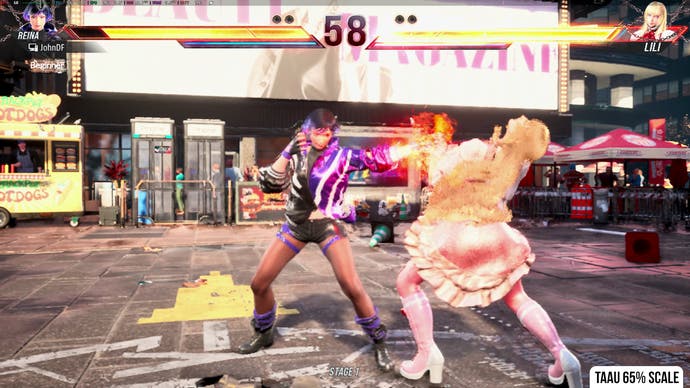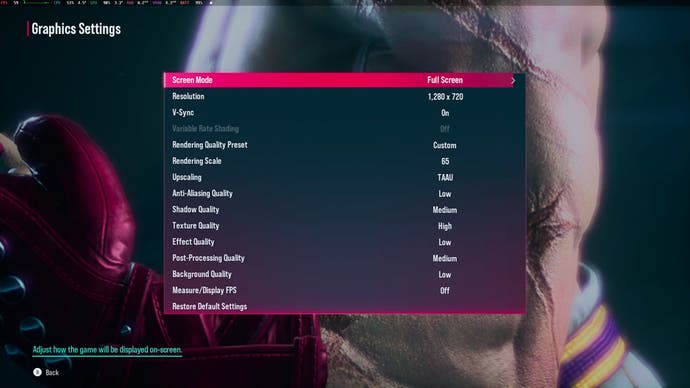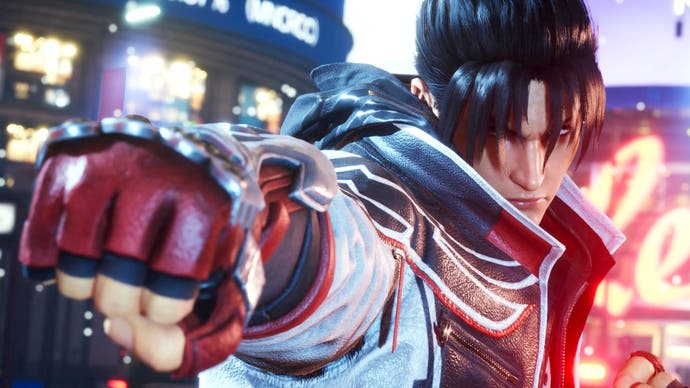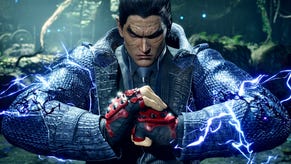Tekken 8: a brilliant fighting game packed with superb technology
Tested on PlayStation, Xbox, PC and Steam Deck.
Tekken 8 is the latest installment in the long running Tekken franchise and - arguably - right up there with the very best. After finding success in its last series entry, the development team pushed harder than ever before, packing this new game full of every mode and option you could imagine. It's an absolute blast to play whether you're looking for competitive play or an over-the-top single-player experience. It's also the first big fighting game built using the latest generation of Unreal technology. As such, unlike Street Fighter 6 and Mortal Kombat 1, Tekken 8 is a game available only on current generation platforms and by and large, it's a winner on all systems.
After the delightfully excessive introduction sequence - a Tekken staple - you're dropped into a main menu packed with modes and options, perhaps more packed than any fighting game I've played to date. You have a full single-player story mode with cutscenes and over-the-top action, you have the arcade quest mode which has you travelling around to fictional arcade competing in Tekken, there's character stories, an arcade mode, practice modes, online options and even the ability to assign soundtracks from every game in the franchise to specific stages. It's almost awe inspiring to see so much stuff in a fighting game.
Visually speaking, Tekken 8 builds on the seventh entry with a focus on a grungy, hyper detailed aesthetic. Characters are chiseled with exaggerated features and clothing designed to emphasise their style. In some ways, it feels a little too busy for my tastes but I think the overall model quality is a nice step up from Tekken 7 with rounder edges, improved materials, better skin shading and much improved clothing. Integration into the much-improved scene lighting is also a night and day difference. This is consistent throughout the game - there's just more detail everywhere you look, lending it a richer overall appearance.
More importantly, Tekken 8 isn't limited by older consoles, there's no cross-gen drag here. It's crisp and sharp on almost all systems, with a higher 'quality of life' factor. Firstly, above all else, one of the biggest improvements stems from loading times - basically, in the last generation of fighters (including Tekken 7) loading between matches takes long enough to become annoying. With Tekken 8, we're basically back to pre-disc loading speeds - just enough time for the animation to play out followed by a jump right into the game. It's slightly faster on PS5 versus other platforms including my PC, but all are extremely quick.
Beyond that, the three consoles boast similar visual settings while PC offers a range of tweakable options. Both PS5 and Xbox Series X use Unreal's dynamic resolution scaler with a maximum resolution of native 4K down to 50 percent scale on both axis. In reality, they often hang closer to 1440p or slightly above. Series X benefits from a generally higher dynamic resolution than PlayStation 5, but in the heat of the action, it's difficult to tell any difference. All consoles use TAA combined with a spatial upscaler. Tekken 8 includes multiple upscalers (17, in fact) on PC including AMD FSR1 which seems to be the closest match in this case. I suspect that Namco is not using FSR2 as disocclusion artefacts can be quite noticeable especially at lower resolutions when playing on PC.
Xbox Series S targets 1080p as a ceiling but often drops to 720p or even below leading to image quality that more closely resembles a PS3-era fighting game - and there are further cutbacks. While PS5 and Xbox Series X look effectively identical, the Series S is a step down in terms of texture detail. I suspect this is due to the smaller memory pool but, basically, it means that some surfaces basically use the lowest possible texture setting. The game still looks good overall but the low resolution and blurry textures mean it doesn't stack up to its bigger brother.
Looking at PC, the first thing to consider are the detail levels - there are a lot of settings. When comparing the various presets, I would argue that everything medium and up looks great and comparable. It's only when using the lowest settings that visuals degrade to the point where it's noticeable. However, the bigger question stems from the upscaler and AA options available. Tekken 8 includes DLSS, FSR2, XeSS, TAAU, TSR, bicubic upsampling, FSR1 and Nvidia Image Scaler along with a resolution scaling slider and a secondary anti-aliasing quality slider.
When putting them side-by-side, all three solutions look pretty good. Weirdly, XeSS seems to exhibit the most significant ghosting issues, but FSR 2 is not that much better. As you go down through the stack and use the more performance related upscaling options, this is only exacerbated. By the time you reach ultra performance, FSR2 is reduced to a messy, borderline unusable image. XeSS and DLSS also lose a lot of quality but not to the same degree. Alas, all of these modes use reconstruction so native res is off the table - that means no DLAA. Thankfully, the slider is available for some other options including the best one - Unreal's TSR, Epic's in-house upscaler. Combining TSR with 100 percent scale provides the absolute best image possible. Minimal artefacts, the sharpest edges and cleanest visuals. So, if you have the headroom, I recommend this option.
Weirdly enough, the presets mostly default to using FSR1 - like the consoles - which is OK-ish but adds sharpening which you may not desire. So, TSR at native res is my first choice followed by DLSS for Nvidia card owners, XeSS is likely best for Intel owners, though I have no Intel cards for testing, and for AMD, I'd say using TSR with a reduced res scale is better if you need to win back performance over using FSR2 which doesn't play nicely with this game.


All of which brings us onto Valve's Steam Deck. Firstly, I had issues running pre-release code but that was solved by using Proton GE. Once in-game, though, it quickly becomes clear that adjustments are needed. Tekken 8 requires a frame-rate of 60fps to play optimally so I made adjustments to get as close as possible. I'd suggest a mixture of medium and low settings, ensuring you retain at least medium shadows and post effects. On lower settings, these two in particular have a profound impact on the presentation. I used 720p resolution with TSR at 65 percent to free up enough GPU horsepower to maintain a locked 60fps. Granted, my Steam Deck OLED has a touch more horsepower than an LCD Deck, so tweak TSR downwards a touch if you're having issues.
I also wanted to discuss input latency - essentially, the time taken between a button press and a resulting action on-screen. I spoke to the authority on input lag, Nigel Woodall, and based on his innovative testing method, PlayStation and Xbox Series versions of the game essentially respond in around 58ms, while PC on a VRR screen with v-sync disabled reduces still further to circa 42ms. In stark contrast, Tekken 7 on consoles launched at circa 120ms before subsequent patches got that down to around 73ms. That's not bad, but Tekken 8 has improved even further.
I've played all versions, but which one's best? My preference ended up being the PC version due to broader arcade stick support, the ability to play beautifully on Steam Deck (in HDR!) and the inclusion of features such as motion blur, which - strangely - is not even an option on the consoles. That said, PS5 and Xbox Series X versions are also exceptionally well done and recommended. Series S is fine as well and plays great but the visuals definitely take a noticeable hit.
Beyond the tech, I also want to spend a little time talking about the game itself. Namco has never made a bad Tekken but not all series entries are created equally. With Tekken 8, I feel the development team has made a game that is good enough to stand alongside my other favorites in the series. Yes, it's still the more cinematic style of Tekken that we saw with the seventh game but the fighting has evolved and it feels extremely fun and satisfying to play. Couple that with the remarkable amount of options and you have an absolutely fantastic package that I can recommend without reservation.

















